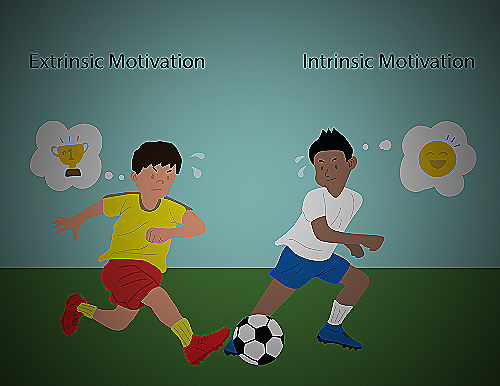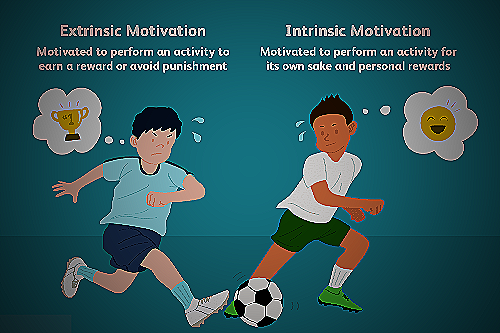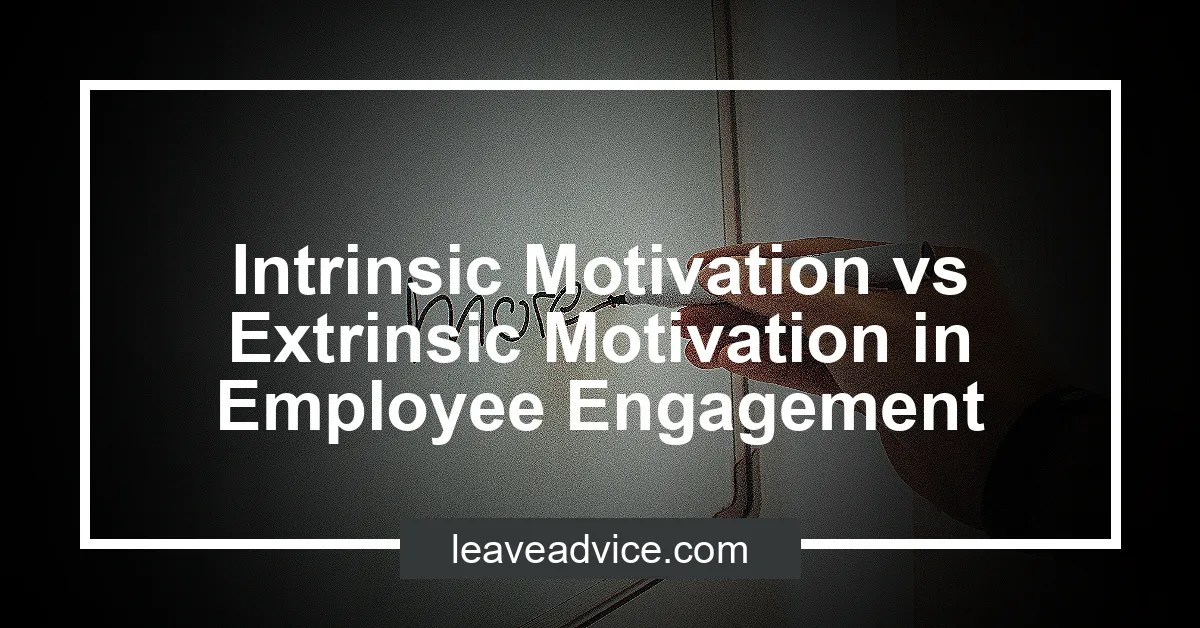Intrinsic Motivation vs Extrinsic Motivation in Employee Engagement
Defining intrinsic motivation vs extrinsic motivation in employee engagement
In employee engagement, motivation plays a crucial role in achieving the organization’s goals. There are two types of motivation that drive employees to perform: intrinsic motivation and extrinsic motivation.
Intrinsic motivation comes extrinsic motivation comes from within, while extrinsic motivation arises from external factors. As an employer or manager, understanding these concepts can help in creating an engaging workplace and developing effective motivating strategies for employees.
In this article, we will define and compare intrinsic motivation and extrinsic motivation and look at their effects on employee engagement and productivity.
Are you struggling to find your motivation? Curious about the differences between intrinsic and extrinsic motivation?
Check out this Youtube video: “Extrinsic vs Intrinsic Motivation” – it could be just what you need to get back on track.
The Basics of Intrinsic Motivation vs Extrinsic Motivation
What is intrinsic motivation?
Intrinsic motivation refers to the driving force that comes from within an individual. It is the motivation you have to engage in an activity simply because you enjoy it and find satisfaction in it.
Intrinsic motivation is driven by personal values, interests and goals rather than external rewards or consequences.
What is extrinsic motivation?
Extrinsic motivation is the type of motivation that arises from external factors. It is the kind of motivation that comes from outside of the self in order to gain a reward or avoid a punishment.
This reward can be in the form of money, grades, promotions or any other external reward that serves as a motivator. Extrinsic motivation can be effective, but it is short-lived and can result in a lack of enthusiasm for the task at hand once the external reward is removed.
Understanding the difference between intrinsic motivation vs extrinsic motivation is important because it can impact the level of engagement and performance of an individual in various settings. Intrinsic motivation drives individuals to engage in an activity because they enjoy it, while extrinsic motivation drives individuals to engage in an activity because they are rewarded for it.
Incorporating intrinsic motivation in the workplace, for example, can result in higher productivity and job satisfaction.
Understanding the Differences Between Intrinsic Motivation and Extrinsic Motivation
Intrinsic motivation and extrinsic motivation are two different types of motivation. Intrinsic motivation comes from within a person while extrinsic motivation comes from external factors.
Understanding the differences between these two types of motivation is important in order to maximize your productivity and success.
Benefits and Drawbacks of Intrinsic Motivation
Intrinsic motivation is driven by internal factors such as personal satisfaction and enjoyment. When someone is intrinsically motivated, they are more likely to fully engage in an activity and be more creative and productive.
This type of motivation also helps individuals to become more resilient in the face of setbacks or failures.
However, when relying solely on intrinsic motivation, individuals may struggle to maintain their drive or find themselves losing interest in an activity. Without external incentives or rewards, it can be difficult to maintain consistent motivation.
Benefits and Drawbacks of Extrinsic Motivation
Extrinsic motivation is based on external factors such as rewards or consequences. When someone is motivated extrinsically, they are more likely to engage in an activity to gain an external reward or avoid an external consequence.
This can help increase productivity and performance in the short term.
However, relying solely on extrinsic motivation can lead to decreased enjoyment and satisfaction with an activity and may even lead to a fear of failure or punishment. This can inhibit creativity and ultimately lead to a decrease in productivity.
Intrinsic Motivation vs Extrinsic Motivation: Which is Best?
Ultimately, the best type of motivation depends on the individual and the situation. Intrinsic motivation can lead to increased enjoyment and creativity but may struggle to maintain consistent motivation.
Extrinsic motivation can lead to short term gains in productivity but may inhibit creativity and decrease enjoyment in the long term.
A combination of intrinsic and extrinsic motivation is often the most effective approach. By utilizing both types of motivation, individuals can maintain consistent drive and enjoy the benefits of internal satisfaction and external rewards.
The Role of Intrinsic and Extrinsic Motivation in Employee Engagement
Employee engagement is essential to maintain productivity levels in the workplace. A crucial aspect that drives employee engagement is motivation.
Two types of motivation exist: intrinsic motivation and extrinsic motivation.
How Intrinsic Motivation Affects Employee Engagement
Intrinsic motivation refers to the internal drive that comes from within an individual. When an employee is intrinsically motivated, they engage in work that they enjoy and feel passionate about.
This leads to better performance, creativity, and innovation. When employees feel connected to the work they do, they often feel a sense of purpose and fulfillment.
Intrinsic motivation can create a positive workplace culture where employees feel appreciated by the organization, leading to better retention rates.
How Extrinsic Motivation Affects Employee Engagement
Extrinsic motivation, on the other hand, is driven by external factors such as rewards, recognition, and praise. It can be effective in motivating employees in the short term.
Still, it does not have the same long-lasting impact as intrinsic motivation. When employees are motivated solely by external factors, their passion for the work often decreases, leading to decreased performance levels.
They may even end up looking for other opportunities as soon as the rewards disappear.
Intrinsic Motivation vs Extrinsic Motivation in Employee Engagement: What Motivates Employees More?
Both intrinsic motivation and extrinsic motivation are essential in creating a positive work environment. Still, intrinsic motivation is said to have a more significant effect on employee engagement in the long run.
While external rewards may increase employee motivation and encourage high performance levels for a brief time, intrinsic motivation should be the primary form of motivation. Organizations that prioritize creating a positive workplace culture that fosters intrinsic motivation enjoy higher retention rates, productivity levels, and employee satisfaction.
In summary, in balancing between intrinsic motivation vs extrinsic motivation, organizations must prioritize fostering intrinsic motivation above external rewards. Striving towards higher levels of employee engagement and contentment ultimately benefits not only the employee but can also lead to better business output.
When to Use Extrinsic Motivation for Employee Engagement
Extrinsic motivation can be used when employees need to be directed towards specific goals and objectives that align with the company’s vision and mission. For example, if the company wants to achieve a certain sales target, offering a bonus or commission can incentivize employees to work harder and achieve the target.
Another example of when to use extrinsic motivation is when employees need to be recognized for their efforts and achievements. A tangible reward like a gift card or certificate of achievement can make employees feel valued and appreciated, which can improve employee morale and engagement.
Finally, promotions and career growth opportunities can also serve as extrinsic motivation for employees. By offering a clear path for career growth, employees may be motivated to work harder and improve their job performance to achieve the next level in their career.

How Intrinsic Motivation and Extrinsic Motivation Influence Learning
Intrinsic motivation and extrinsic motivation are two types of motivation that can greatly influence employee learning and development. Intrinsic motivation comes from within, while extrinsic motivation arises from external factors such as rewards or punishments.
Research has shown that intrinsic motivation is better for long-term learning and development because it leads to greater engagement and enjoyment of the activity. When employees are intrinsically motivated, they are more likely to seek out challenges and take risks in order to improve their skills and knowledge.
On the other hand, extrinsic motivation can be useful in the short-term, but it may not lead to long-term learning and development. Employees who are solely motivated by extrinsic factors are more likely to focus on the rewards or punishments rather than the actual learning or development opportunities.
This can lead to a lack of engagement and poorer outcomes in the long run.
The Role of Job Satisfaction and Autonomy in Employee Learning and Development
Job satisfaction and autonomy are two factors that can greatly influence intrinsic motivation in employee learning and development. When employees are satisfied with their job and have a sense of autonomy, they are more likely to be intrinsically motivated to improve their skills and knowledge.
Studies have shown that job satisfaction is positively correlated with intrinsic motivation in employee learning and development. When employees feel happy and fulfilled in their job, they are more likely to seek out learning opportunities and challenges.
Autonomy is also an important factor in intrinsic motivation. When employees have a sense of control over their work and are given the freedom to make decisions, they are more likely to be motivated to learn and develop their skills.
This can lead to greater engagement and higher-quality work.

The Importance of Balancing Intrinsic Motivation and Extrinsic Motivation
When it comes to employee engagement and performance, finding a balance between intrinsic motivation and extrinsic motivation is crucial. Intrinsic motivation comes from within an individual, while extrinsic motivation originates from the outside, often in the form of rewards and recognition.
Many factors contribute to a lack of motivation and engagement in employees, such as job insecurity, lack of recognition, and unrealistic goals. Without strong engagement levels, employees may become disengaged and not perform their best.
Similarly, when employees are disengaged, it can lead to a lack of motivation.
How to Balance Intrinsic and Extrinsic Motivation in the Workplace
Organizations need to encourage both intrinsic and extrinsic motivation for optimal employee engagement and performance. One way to do this is by supporting employees’ personal and professional development, helping them find enjoyment and satisfaction in their work.
Another approach is to reward employees for their efforts and achievements through promotions, bonuses, and other incentives. However, it’s important to avoid valuing extrinsic motivation over intrinsic motivation, as this can lead to employees feeling disenfranchised and disengaged with their work.
Ultimately, striking the right balance between intrinsic and extrinsic motivation requires a strong understanding of individual employees’ needs and values. By creating a supportive and engaging work environment that values both types of motivation, organizations can encourage their employees to perform their best and achieve their goals.
Counterarguments to Intrinsic Motivation vs Extrinsic Motivation
While intrinsic motivation is often touted as the ideal way to motivate employees, there are some arguments against its importance. One argument is that it may not always be realistic or desirable in certain work environments.
For example, in jobs that are inherently dull or repetitive, it may be difficult to find intrinsic motivation to complete tasks day in and day out. Similarly, in high-pressure environments where there are strict deadlines and high stakes, it may be unrealistic to expect employees to find intrinsic motivation in every task they perform.
On the other hand, while extrinsic motivation may be effective in some cases, it also has its own set of drawbacks. One argument against extrinsic motivation is that it can actually be counterproductive in the long run.
When employees are solely motivated by external rewards, such as bonuses or promotions, they may lose sight of the actual work they are doing and become less invested in its quality. Additionally, extrinsic rewards may lead to employees engaging in negative behaviors, such as competition or cheating, to attain the reward.
Understanding Intrinsic and Extrinsic Motivation in Employee Engagement
Employee engagement and motivation are crucial factors in determining the success of any organization. While intrinsic motivation comes from within, extrinsic motivation arises from external factors.
Intrinsic Motivation
Intrinsic motivation is the internal drive that individuals have to achieve their goals and develop themselves professionally. When employees are intrinsically motivated, they engage in an activity because they enjoy it and get personal satisfaction from doing it.
This type of motivation is important for long-term career growth and development.
Extrinsic Motivation
Extrinsic motivation, on the other hand, involves external factors like rewards, pay, and recognition. When employees are extrinsically motivated, they perform an activity to gain a separable outcome or an outside incentive other than the enjoyment of the task.
While this type of motivation can help achieve short-term goals, it is not sustainable in the long run.
The Importance of Intrinsic Motivation in Employee Engagement
Engagement levels are directly related to the level of motivation employees have.

